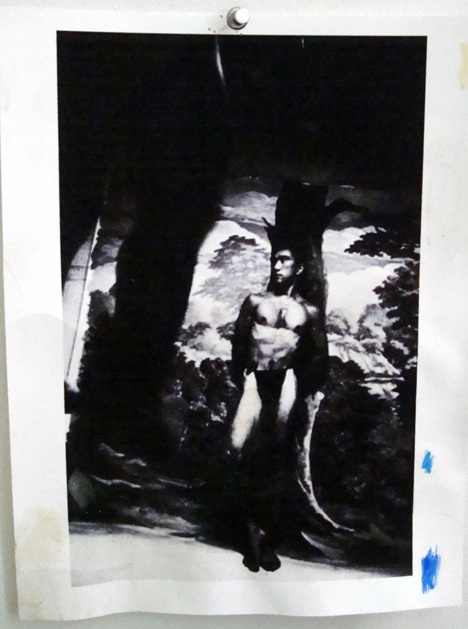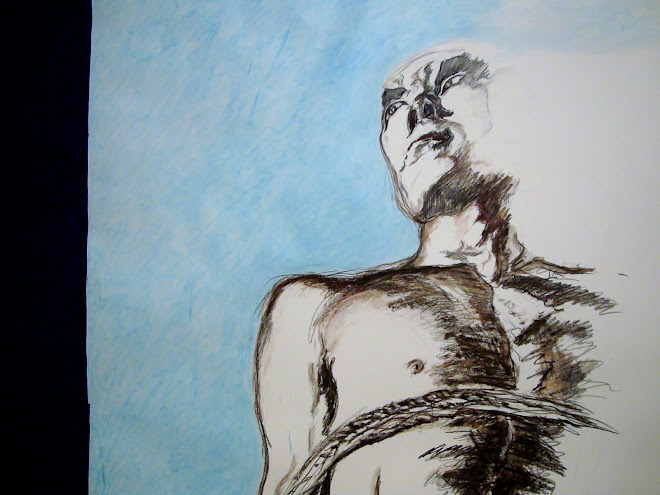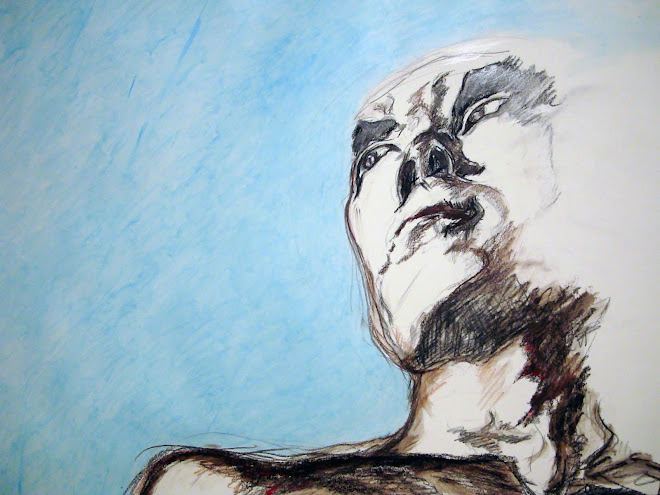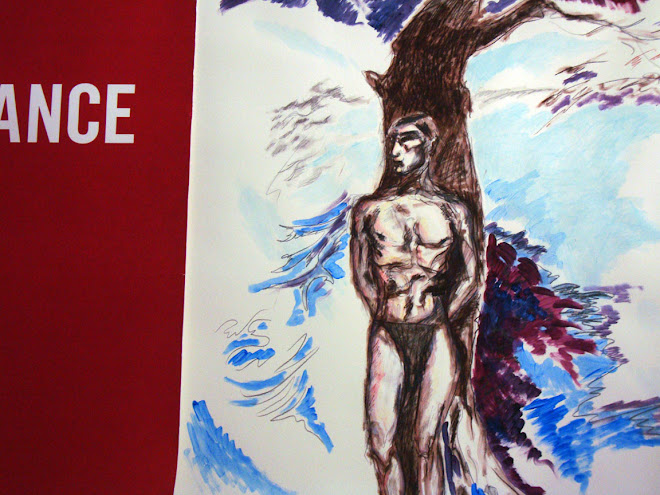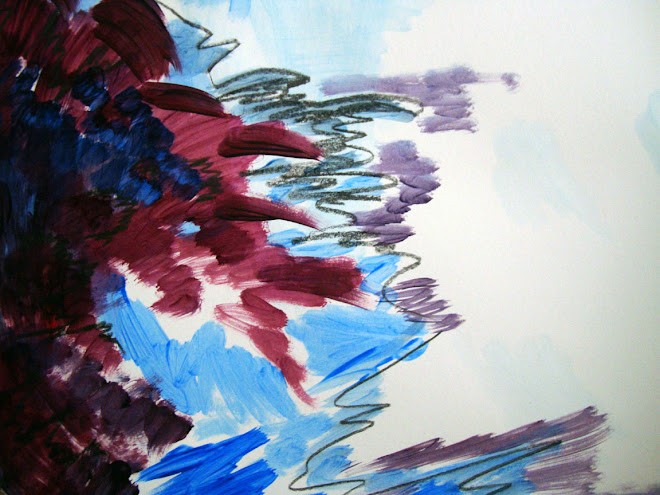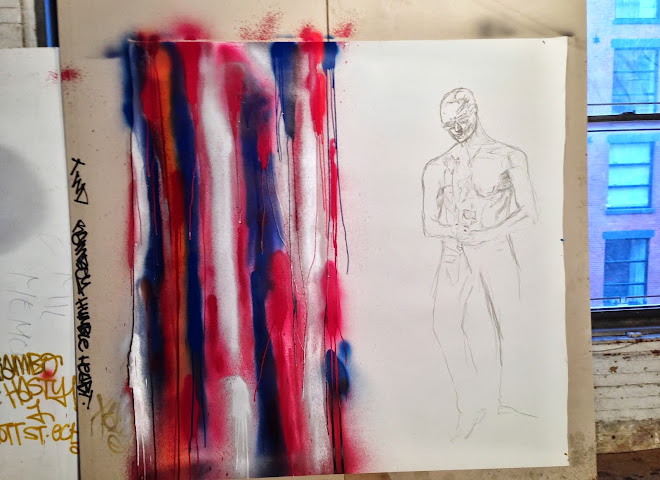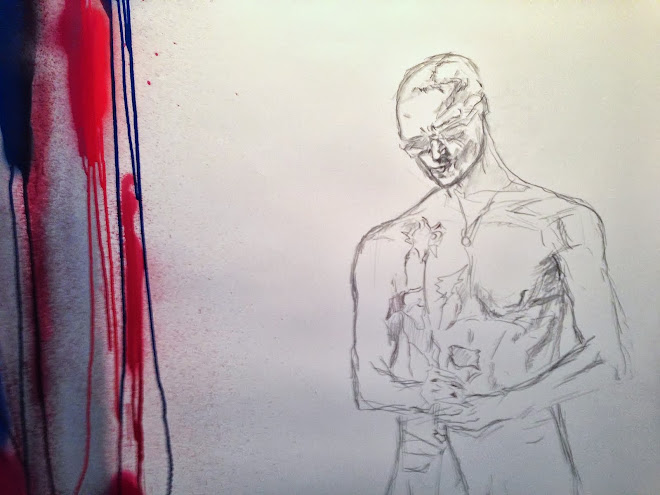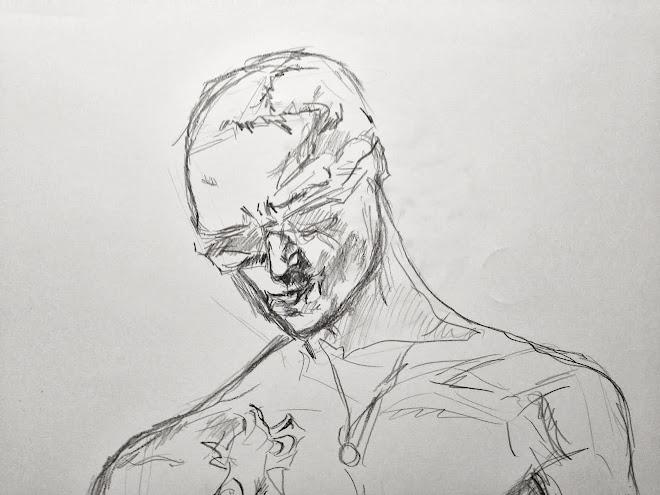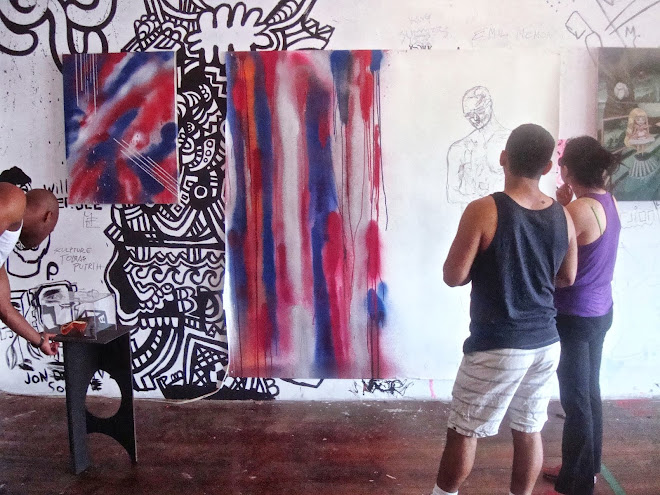Friday, February 5, 2010
Diamonds series
As just published in the Slovenian Art magazine “Likovne besede” , description of my art set "Diamonds"
Diamonds series
Few years ago I was in an Irish pub in NYC. On the wall they had photographs of greats of Irish literature, James Joyce, Wilde, Yeats and so on. Under each photograph was a quote made by each writer. The one that stuck in my head was the one by Samuel Beckett; “Worst then hate is to ignore” It strucked me how true is it; emails, and phone calls unanswered, lovers ignoring you and driving you to madness, you prefer to be screamed at, then just nothing, silence; frustrations when curators or art dealers are not responding to your request for attention and etc… as is that true and devastating on personal level, the same goes for our collective sanity and lives in geopolitics.
One thing that really made an impact on me was the debate I followed in NYC when invasion of Slovenia started, or lack of it. Goings around the siege of Sarajevo and Yugoslav wars in general. The lack of interest and dismissive tribal wars theory, while hundred of thousand civilians died, through years of ignoring at the hands of new morphed virus of fascism or worse. The list goes on back in time, with countless examples of it, like Spanish civil war, invasions of Czechoslovakia, Jewish Holocaust, or forward that line like Rwanda, Darfoure etc… There’s no end to the misery and future is fully pregnant with horrors to come.
Diamonds set; I started to work shortly after the invasion of Iraq on this series of images. The war for an artist was an obvious central point of engagement. So many things were at stake, human tragedy, response on the attack on NY that I had misfortune to witness, restructuring of global world order, new Europe versus the old one, debates in terms of clashes of civilqaztion and religion with all the historical baggage that that implied. As Becket quote goes, so was also in that embrace of death an enormous exchange of information and trough conflict sort of a crush course
on the other. In the US there was this vortex of spinning ideologies from Wolfowitz Neo conservatives to Said’s Orientalists, punctuated with regular bulletins from the war and occasional message from Osama from a cave in Vaziristan or somewhere like that. The media was in overdrive to such an extant that even a legendary Joe six-pack knew that there are Shiites and Sunnis in Islam, something that was absolutely out of grasp or even remotely close to any interest to an average working man (it was also news to me). This violent penetration started by theorist with the notion
of reorganizing and solving the problem of the Middle East once and for all and in process securing supplies of energy to the West. It all exploded in a messy reality that is muddied and confusing, bringing suffering on the warfront with enormous causalities, especially among Iraqi civilians and at home front with larger and larger numbers of returning dead and permanently physically and mentally scared soldiers. This mess after so many years still is not resolved and the focus is being shifted to Afghanistan, but the impact on the West , especccialy US is already being absorbed into the DNA of the empire.
While this was going on and occupied most of the energies a more deadly and hideous, if there is something like ranking horror, wars were going and are still in progress on African continent. One day by chance I run into satellite photograph of Europe and Africa at night. I was stunned, it was so clear, Europe shining bright as a Christmas tree with electric light emanating from it’s cities, meanwhile the whole of Africa was black, literarly a black continent, with burst of light here and there. I don’t think there’s a better image that represents a reality of total human and geopolitical marginalization than this. In constant string of wars and collapsed societies, especially in West African nations of Liberia, Sierra Leon, and in central Africa from genocide in Rwanda emanating conflict in Congo. This wars took millions of lives, especially still ongoing conflict in Congo. This is definitely where that Beckett quote really make sense. Ignoring, where personal marginalization, that everybody has in one form or another experienced, is ingrained in a deep subcontiones, that takes shape as a Jungian collective nightmare in this massive geopolitical tragedy. The Conrad’s ‘Journey in to the darkness’ and king Leopold lives on in even more perverse form. The old school sacking of African natural resources, like precious metals and as in case of Liberia and Charles Taylor especially so called blood diamonds took and still is taking place in it’s most rudimental, brutal and probably more bloody way as it did in the darkest times of Western colonial rule. On a larger scale, that includes also the Arab world, what happened in Africa is part of collapsed utopias of 20 century, now running into new millennium. This dystopia emanates from euphoria of post war anti colonial liberation movements that victoriously all over the world and especially in Africa swept away old Western colonial rulers and with mostly progressive secular ideology promised new better future for it’s people. It crashed hard, maybe it can’t go deeper and there are signs that things are brightening, as is the case of post conflict Liberia and it’s first female president Ellen Johnson Sirleaf, not to mention South Africa with Mandela.
One of the most recognizable symbols of these wars, especially with Charles Taylor in Liberia where Boy soldiers and Blood diamonds. On the web I run into couple of images of this kids (I’m using also images of adults) that did strike me. As an artist I think the central part of creative process is editing images. The ones from a constant flow of ready made, consumed or the ones you produce as an artist, very few have power (apart of conceptually being appropriate illuminating the idea behind the work) of connection to that “fill rouge” that is the act of creativity itself. Images that are charged and active, like masks carved by peoples of Sepik River in New Guinea, where a designated carver in a ritual carves a mask for auspicious harvesting of jams. He charges that object with magic power (like an MTA or a credit card with its magnetic stripe when activated can give you cash). The object is active and it guaranties that the people of that community will have food. It’s a bit what Joseph Beuys was doing with his shamanistic charging of transformative matter of lard, felt and when charged with cultural power he connected it to concrete political ideas and actions. The link between creativity and art and active engagement with the world.
The ready-made images in this series for me have that creative charge. The boys have strong presence, holding their weapons, some Vogueing with their jeans jackets, sunglasses, cigarets, they are killers and victims being used, marginalized in personal and geopolitical way and disposable, like dust; I’m putting in some poetic justice; like diamond dust, adding images of nebulas, the sparkling of diamond or stellar dust. The pictures of the kids and the images of stars from Hubbel telescope and the rings of Saturn taken by Casini probe orbiting Saturn are “find objects” appropriated from the web. The life, reason, logic and technology behind these are startling; of boy soldiers or the images of stars and rings, what was behind each of them? When the work was produced on a large scale, the part of the print from the earth of the kids is pixilated, the part of the rings or the stars it’s sharp and clear.
On some of this images the boys are mimicking, in their clothing by posing with AK47’s, imagery from gangster rap videos, pop images produced by corporate entertainment industry in US and the West, a world far far away. Those pop images and music with its message have a powerful impact and are morphing and synthesizing through the world with the global underclass. Corporations took the imagery and sounds of US black urban subculture, changing it’s original message of protest repackaging and glamorizing it, especially in gangster rap music videos, with what sales the most; sex, violence and fantasy of excess glamour so called “Bling Bling”, which refers symbolically to shining of diamonds. Huge profits where and are made in selling this product manly to young middle class suburban white kids as well manufacturing fantasies sold to the poor. With diamonds,” Blood diamonds” the circle connects, the result of horror this kids are caught as murderers and victims, is litterly supplying the glamour,”Bling Bling”(diamonds) to luxury stores from New York’s 5 ave to London, Paris… Honk Kong and around the world. Rap merging with Jamaican “Dance Hall” music (music that has a rougher edge than “Reggie”) with images of style in glamorous videos, propelled by Corporate entertaining industries with global reach, shaped the look and attitudes from Kingston In Jamaica to Haiti, shantytowns in Rio, Johannesburg and around the globe. It became a look and a sound (with local versions, like “Bangra” in India) of places were there’s a power void without a civil society, where the state control is being filled by warlords, drug kings and gangs, from American inner cities to Parisian suburbs… In an interesting twist, what was being lifted and neutralized (the subversive political message of urban youth culture) in a crass exploitative manner in pure capitalist fashion in it’s journey trough the world, it morphed and recharged itself again with subversive power when adopted and reworked by the world’s underclass, people on the margins of geopolitics and personal.
One important element, apart from visual images, in this project is a musical recording (trough years I also worked with music as an integral part of my art work), track called “Diamonds”. Since in the hart of this work is pop culture I recorded a pop song that deals with the issues that I just described in previous paragraph. In a way I think I more succefouly explained the project in the lyrics and the beat of the song.
“Diamonds are.. ”
Diamonds are, mhhh, hey diamonds are….
those diamonds are forever
in the port of Amsterdam man in suits
are trading stones glittering like stars
mhh, hey diamonds are…
diamonds are forever
Hey, while a boy in A red and yellow Adidas
is proudly holding his AK 47
those Paperboys are running
into black holes and exploding superstars
ohh, hey,mhh diamonds are..
diamonds are in your eyes
in your heart, diamonds are..
back forever….
In the port of Amsterdam man suits
are trading stones glittering like stars
and those men on 5 Av.
keep trading into women’s dreams
and those bad boys diamond teeth
He is just a kid, a killer
with a pretty face
bright eyes
with sweat smile
with the burden of exploding hearts
hey, diamonds are..
he is just a child, a soldier
in a dirty war
shame on them, on you and all of us
diamonds are, there forever
I hope I see you there
in the journey to the heart
where cruel man are selling you
the crystal light, the crystal light….
ohh diamonds are., hmm those diamonds are
there for ever
I hope I see you there
in the land of boys with guns
in theirs red and yellow track suits
shades, cigarettes and baseball bats
oh diamonds are
in your eyes
in your heart
oh, diamonds are
in your eyes
for ever
in your heart
for ever
oh, diamonds are
for ever
in your eyes
for ever
in you heart
for ever
oh, diamonds are….
http://www.thesixtyone.com/emilmemon/#/emilmemon/song/DiamondsKareemdiscobass/LuPeM4IbHPY/
While working on this series, dealing with images of boy soldiers, I was struck by visual similarity with one of the most marginalized group of kids in NYC, that is minority gay and transgender youth, many working as prostitutes, on the piers on the West side of Manhattan. They are very vulnerable, partly because of stigma that is still strong in black and Latino communities on homosexuality. They congregate and create their own space in a peace of Manhattan geography at the end of Christopher St. It has a long history as a meeting place, way back when this was abandoned urban landscape, with collapsed disused piers on Hudson river. Today the place dramatically changed into highly developed and expansive part of the city. One of the most interesting NYC artists started his work here, when working as a male boy prostitute, making large drawings on the walls inside the dangerous collapsing structures on the piers in late 70’s and early 80’s, he was David Wojnarowicz. The place changed from a hallucinatory apocalyptic landscape to nicely renovated place, with beautiful manicured grass and flowers, where during summer people relax, take in the sun, jog and watch spectacular sunsets over Hudson river. Richard Mayer designed some of the most signature apartment glass towers in the city, that visually combined with the water, grass, flowers and tress form a visual urban Arcadia. It couldn’t be more different, but the kids a generation after generation remain and form their own, in a marvelous resistance to santazided, degentrificated, for profit city’s urban development, alternative reality. In the second part of these series I connected imagery from Africa and Hubble telescope with photographs that I took in a certain cinematic fashion, by transitioning trough the images of the waves of Hudson river and the blue of the Richard Mayer building glass to the faces of this set of youths, that are trying to survive it’s own margins and not to be ignored.
Emil Memon NYC, Nov 7, 2009
Subscribe to:
Posts (Atom)
